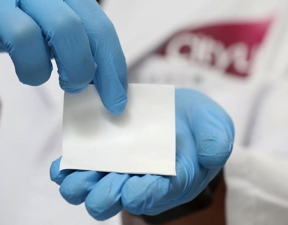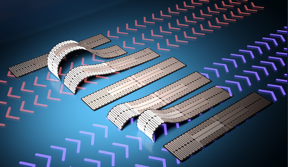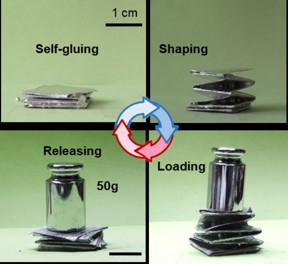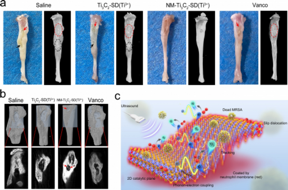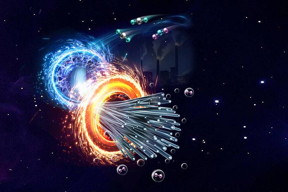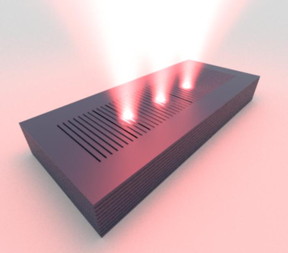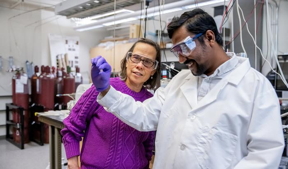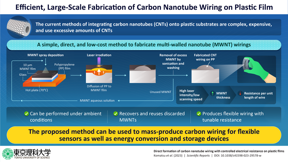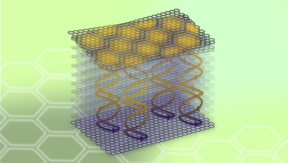Home > Press > Nanoscale CL thermometry with lanthanide-doped heavy-metal oxide in TEM
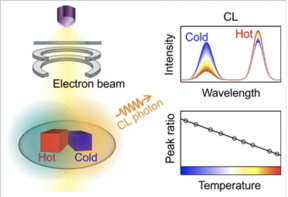 |
| Schematic illustration of the cathodoluminescence (CL) nanothermometry.
CREDIT |
Abstract:
A groundbreaking method for measuring the temperature of nanometer-sized samples within a transmission electron microscope (TEM) has been developed by Professor Oh-Hoon Kwon and his research team in the Department of Chemistry at UNIST. This innovative technology, utilizing nano-thermometers based on cathodoluminescence (CL) spectroscopy, opens up new possibilities for analyzing the thermodynamic properties of fine samples and advancing the development of high-tech materials.
Nanoscale CL thermometry with lanthanide-doped heavy-metal oxide in TEM
Ulsan, South Korea | Posted on March 8th, 2024
The transmission electron microscope allows researchers to observe samples at a magnification of hundreds of thousands of times by transmitting a short-wavelength electron beam through the sample. By detecting light emitted from the sample through cathode ray emission spectroscopy, researchers can finely analyze the physical and optical properties of the sample at nanometer scales.
The newly developed nano-thermometers rely on the temperature-dependent intensity variation of a specific cathode ray emission band of europium ions (Eu3+). By synthesizing nanoparticles doped with europium ions within gadolinium oxide (Gd2O3), the research team ensured minimal damage from the electron beam, enabling long-term experiments.
Through dynamic analysis, the team confirmed that the intensity ratio of the light emitting band from europium ions is a reliable indicator of temperature, with an impressive measurement error of about 4℃ using nano thermometer particles measuring approximately 100 nanometers in size. This method offers more than twice the accuracy of conventional TEM temperature measurement techniques and significantly improves spatial resolution.
Furthermore, the team demonstrated the applicability of the nano-thermometers by inducing temperature changes with a laser within the TEM and simultaneously measuring temperature and structural variations in real-time. This capability allows for the analysis of thermodynamic properties at the nanometer level in response to external stimuli, without interfering with standard TEM analysis procedures.
Won-Woo Park, the first author of the study, emphasized the non-invasive nature of the temperature measurement process, highlighting that the interaction between the transmission electron beam and the nano-thermometer particles enables real-time temperature detection without disrupting TEM imaging. He noted, “The big advantage of the developed nanometer is that the temperature measurement process does not interfere with the existing transmission electron microscope analysis,” adding, “Since temperature is measured using light, a by-product generated by the interaction between the transmission electron beam and the nanometer particle, it is possible to measure the image of the transmission electron microscope and detect the temperature in real time.”
Professor Kwon underscored the significance of this research, stating that “The developed temperature measurement indicators, when combined with real-time imaging techniques, facilitate the observation of local temperature changes in response to external stimuli.” He further stated, “This advancement is poised to significantly contribute to the development of high-tech materials such as secondary batteries and displays.”
The findings of this research have been published in the online version of ACS Nano on January 30, 2024. This research was made possible with the support of the Samsung Science and Technology Foundation.
####
For more information, please click here
Contacts:
JooHyeon Heo
Ulsan National Institute of Science and Technology(UNIST)
Office: +82-52-217-1223
Copyright © Ulsan National Institute of Science and Technology(UNIST)
If you have a comment, please Contact us.
Issuers of news releases, not 7th Wave, Inc. or Nanotechnology Now, are solely responsible for the accuracy of the content.
| Related Links |
| Related News Press |
Chemistry
![]()
What heat can tell us about battery chemistry: using the Peltier effect to study lithium-ion cells March 8th, 2024
News and information
![]()
Researchers develop artificial building blocks of life March 8th, 2024
Physics
![]()
Optically trapped quantum droplets of light can bind together to form macroscopic complexes March 8th, 2024
![]()
Scientists use heat to create transformations between skyrmions and antiskyrmions January 12th, 2024
![]()
Focused ion beam technology: A single tool for a wide range of applications January 12th, 2024
Imaging
![]()
The USTC realizes In situ electron paramagnetic resonance spectroscopy using single nanodiamond sensors November 3rd, 2023
![]()
Observation of left and right at nanoscale with optical force October 6th, 2023
![]()
Quantum powers researchers to see the unseen September 8th, 2023
Possible Futures
![]()
Optically trapped quantum droplets of light can bind together to form macroscopic complexes March 8th, 2024
Discoveries
![]()
What heat can tell us about battery chemistry: using the Peltier effect to study lithium-ion cells March 8th, 2024
![]()
Researchers’ approach may protect quantum computers from attacks March 8th, 2024
![]()
High-tech ‘paint’ could spare patients repeated surgeries March 8th, 2024
![]()
Optically trapped quantum droplets of light can bind together to form macroscopic complexes March 8th, 2024
Materials/Metamaterials/Magnetoresistance
![]()
Focused ion beam technology: A single tool for a wide range of applications January 12th, 2024
![]()
Finding the most heat-resistant substances ever made: UVA Engineering secures DOD MURI award to advance high-temperature materials December 8th, 2023
Announcements
![]()
What heat can tell us about battery chemistry: using the Peltier effect to study lithium-ion cells March 8th, 2024
![]()
Optically trapped quantum droplets of light can bind together to form macroscopic complexes March 8th, 2024
Interviews/Book Reviews/Essays/Reports/Podcasts/Journals/White papers/Posters
![]()
Researchers develop artificial building blocks of life March 8th, 2024
![]()
Optically trapped quantum droplets of light can bind together to form macroscopic complexes March 8th, 2024
Photonics/Optics/Lasers
![]()
Optically trapped quantum droplets of light can bind together to form macroscopic complexes March 8th, 2024
![]()
HKUST researchers develop new integration technique for efficient coupling of III-V and silicon February 16th, 2024
![]()
A battery’s hopping ions remember where they’ve been: Seen in atomic detail, the seemingly smooth flow of ions through a battery’s electrolyte is surprisingly complicated February 16th, 2024
![]()
NRL discovers two-dimensional waveguides February 16th, 2024
- SEO Powered Content & PR Distribution. Get Amplified Today.
- PlatoData.Network Vertical Generative Ai. Empower Yourself. Access Here.
- PlatoAiStream. Web3 Intelligence. Knowledge Amplified. Access Here.
- PlatoESG. Carbon, CleanTech, Energy, Environment, Solar, Waste Management. Access Here.
- PlatoHealth. Biotech and Clinical Trials Intelligence. Access Here.
- Source: http://www.nanotech-now.com/news.cgi?story_id=57458
- :has
- :is
- :not
- :where
- $UP
- 10
- 100
- 12th
- 16th
- 2%
- 2024
- 26
- 30
- 3rd
- 4
- 6th
- 7
- 7th
- 8th
- a
- About
- AC
- access
- accuracy
- adding
- advance
- advanced
- advancement
- advancing
- ADvantage
- against
- allows
- an
- analysis
- analyze
- analyzing
- and
- approach
- approximately
- ARE
- artificial
- AS
- At
- author
- award
- away
- BAND
- based
- batteries
- battery
- Beam
- been
- Better
- between
- Big
- bind
- Blocks
- Brazilian
- Building
- by
- CAN
- capability
- carbon
- Center
- CGI
- Changes
- chemistry
- click
- co2
- COM
- combined
- comment
- computers
- Condensed matter
- conductor
- conducts
- CONFIRMED
- content
- contribute
- conventional
- Conversion
- converts
- could
- create
- credit
- damage
- December
- del
- demonstrated
- Department
- Derivatives
- detail
- detect
- detecting
- Detection
- develop
- developed
- Development
- direct
- direction
- discovered
- Discovers
- displays
- DoD
- does
- dynamic
- effect
- Effective
- efficient
- electrolyte
- emission
- Emissions
- emphasized
- enables
- enabling
- end
- Engineering
- ensured
- error
- Ether (ETH)
- EVER
- existing
- experiments
- external
- facilitate
- February
- findings
- fine
- First
- flow
- For
- form
- formulation
- Foundation
- frameworks
- from
- further
- GAS
- generated
- gif
- Graphene
- greenhouse gas
- groundbreaking
- Have
- he
- Health
- help
- highlighting
- his
- http
- HTTPS
- Hundreds
- if
- image
- Imaging
- impressive
- improves
- in
- Inc.
- Indicator
- Indicators
- inflammation
- information
- innovative
- innovative technology
- Institute
- integration
- interaction
- interfere
- interfering
- involving
- IT
- January
- jpg
- korea
- Kwon
- laser
- Leads
- left
- Level
- li
- light
- links
- lithium
- local
- locking
- long-term
- made
- March
- material
- materials
- Matter
- May..
- measure
- measured
- measurement
- measuring
- mechanism
- method
- Microscope
- million
- minimal
- more
- most
- nano
- nanotechnology
- National
- Nature
- net
- New
- newly
- news
- Noble
- noted
- novel
- November
- now
- observation
- observe
- october
- of
- Offers
- offset
- on
- online
- online version
- opened
- opens
- opportunities
- optical
- or
- overall
- paint
- pandemic
- Park
- particle
- patients
- PHP
- physical
- Physics
- plato
- Plato Data Intelligence
- PlatoData
- please
- poised
- possibilities
- possible
- Post
- posted
- potent
- powers
- press
- Press Release
- procedures
- process
- Professor
- properties
- protect
- protection
- proved
- published
- Quantum
- quantum computers
- quantum technology
- range
- rapidly
- ratio
- RAY
- real
- real-time
- receives
- release
- Releases
- reliable
- rely
- remember
- repeated
- research
- researchers
- Resolution
- resonance
- response
- responsible
- return
- right
- Room
- sample
- Samsung
- Save
- scales
- Science
- Science and Technology
- Search
- secondary
- Secures
- see
- seemingly
- seen
- September
- Share
- significance
- significantly
- simultaneously
- single
- Size
- small
- smooth
- Soft
- solely
- solid
- South
- South Korea
- Spatial
- specific
- Spectroscopy
- standard
- start
- stated
- stating
- structural
- Study
- submit
- such
- support
- Surface
- surprisingly
- sustainable
- Tandem
- team
- technique
- techniques
- Technology
- tell
- tested
- tests
- than
- that
- The
- their
- this
- thousands
- Through
- time
- times
- to
- together
- tool
- transformations
- transmission
- trapped
- treatment
- Twice
- underscored
- Universal
- university
- unlocks
- us
- use
- useful
- using
- USTC
- Utilizing
- variations
- version
- was
- Water
- Wave
- when
- wide
- Wide range
- with
- within
- without
- Yahoo
- you
- zephyrnet











